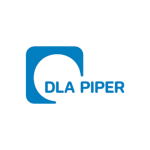Draft Law Companion Ruling 2019/D2 – non-concessional managed investment trust (MIT) income
LCR 2019/D2 concerns the recent increase of the withholding tax rate from 15% to 30% (effective from July 1 2019), for certain MIT fund payments to foreign investors, sourced from non-concessional MIT income (NCMI).
Broadly, NCMI includes income or gains made by an MIT from structures comprising Australian investments in:
Cross-staple non-rental activities;
Trading activities;
Agricultural investments; or
Residential housing investments.
LCR 2019/D2 sets out the ATO's draft views and examples on important aspects that affect many MITs with foreign investors. Such aspects include:
How to determine MIT fund payments are attributable to NCMI;
The meaning, scope of, and exceptions from 'cross-staple arrangements';
The meaning of 'rent' (i.e. leases vs licences) for Division 6C (public trading trust) purposes;
The meaning of 'facility' and 'economic infrastructure facility', which are relevant to important carve-outs for very large infrastructure investments;
Distinguishing residential housing from commercial/retail operations, which could still qualify for the 15% MIT withholding tax rate;
Meaning of 'primary production business' and related phrases, which are relevant for MITs investing in agricultural investments; and
The scope and application of transitional rules, which (in limited circumstances) could allow for the 15% MIT withholding tax rate.
Interaction of debt/equity rules and transfer pricing rules
TD 2019/10 sets out the ATO's view that Australia's debt/equity rules do not limit the operation of Australia's transfer pricing rules.
In particular, TD 2019/10 sets out the ATO's illustrative examples that result in the arm's-length condition (imposed by transfer pricing rules) operating to deny tax benefits otherwise available under Australia's tax rules.
One example concerned an outbound loan by an Australian resident company to its foreign resident subsidiary, which is said to be:
An equity interest under Australia's debt/equity rules;
But deemed to be a debt interest under the arm's-length conditions imposed by Australia's transfer pricing rules.
According to the ATO, this meant that Australia's participation exemption would not apply to the loan, and thus the Australian resident company makes a transfer pricing benefit to which the commissioner could apply the transfer pricing rules.
TD 2019/10 applies to income years commencing on or after June 29 2013, which was when Australia's strengthened transfer pricing rules first applied.
TR 2019/D2 – arm's-length debt test for thin capitalisation
TR 2019/D2 sets out the ATO's views on the arm's-length debt test (ALDT) in Australia's thin capitalisation rules.
Broadly, Australia's thin capitalisation rules deny debt deductions to the extent an entity's debt levels exceed gearing levels permitted by the thin capitalisation rules.
ALDT is one of the three ways to work out the permissible gearing level for an inbound or outbound entity. Broadly, it permits an entity to be debt-geared up to an amount that an independent financial institution would lend, subject to a number of statutory assumptions.
TR 2019/D2 sets out the ATO's views on many important aspects of the ALDT, including the 'lack of parental guarantee' statutory assumption that is often difficult to satisfy in practice.
With certainty now that the ALDT will remain as law (as the Australia Labor Party, which proposed to abolish ALDT, did not form government), the ALDT and TR 2019/D2 have significant implications for debt-geared cross-border structures with Australian investments.
DLA Piper Australia
T: +61 2 9286 8227











